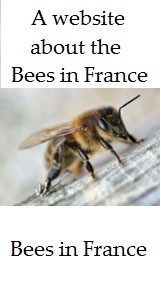

Hedgehogs in France and their decline
It’s always been known that
tramps and gypsies ate Hedgehogs along with other wild creatures that are
easily captured. Indeed in Medieval England Hedgehog and Squirrel would be
found on the tables of the Nobility. Up until 100 years or so ago there
would have been little if any impact that resulted from this behaviour
should it have continued with a largely unmanaged rural landscape, a small
human population and even fewer roads or vehicles in the
The three main ethnic groups that Romany people typically fall into in
"Roms",
referring to Romany who originate from territories in
"Manouches",
also known as "Sinté", who often have familial ties in
"Gitans",
who trace their family history to Romany people in
In
my experience in
Unfortunately the lifestyle of these people
frequently clashes with the rules and values of mainstream society and the
capture of wildlife for consumption is one such area.
.jpg)
In
All other species are protected in the broad
sense that generally forbids the capture, detention, transport,
naturalization,
In the case of the Hedgehog full protection was
afforded them in April 1981 which in the case of an infraction allows for a
penalty of up to 1 year imprisonment and €15,000 in fines plus confiscation
of any objects used when committing the offence, (vehicles, weapons etc).
Extraordinary as it may seem the French hedgehog
population has declined by some two thirds during the course of the last 20
years or so with an average of some 2 million killed each year.
As
with any species there are natural reasons for mortality that we can
separate out approximately as follows starting with the fact that some 20%
of babies die before leaving the nest. Of
those that survive and leave the nest some
18% are decimated by parasitism (maggots, ticks, fleas).
9% are victims of their natural predators,
weasels, badgers, polecats, marten and foxes and 13% die of exhaustion and
hunger in hard winters.
Unnatural deaths caused
directly by human activity account for the remaining 60%.
26% of them die poisoned by pesticides (Metaldehyde)
used to kill slugs.
24% are killed by road traffic
The remaining 10% die by drowning in swimming
pools, being wounded by brushcutters and lawnmowers, burned in piles of
leaves and brushwood or are trapped in netting.
An unknown number of babies will die from
starvation following the death of their mother from one of the above causes.

What this means is that a young hedgehog that
leaves the nest now has a life expectancy of less than 2 years and perhaps
only 4 in a 1000 will reach the age of 10 years with a potential, if
unlikely, life span of 15 years or more.
What is difficult to determine is the number of
hedgehogs that are captured to be eaten by Romany people but it’s probably
quite substantial at the local level but without great impact Nationally.
None the less it is important and every year people are caught in the act of
collecting them when they usually receive a verbal caution for a first
offence. Of course everyone knows it isn’t a practice that is going to stop
overnight given the understandable cultural divides that exist between the Romany people and
French mainstream society.
What is clear is that it is all of our actions, (some more than others maybe), that are responsible for their dramatic decline and we can all try to minimise the harm we cause.



